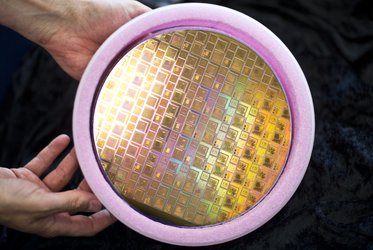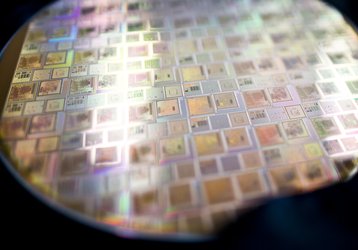Accept all cookies Accept only essential cookies See our Cookie Notice

About ESA
The European Space Agency (ESA) is Europe’s gateway to space. Its mission is to shape the development of Europe’s space capability and ensure that investment in space continues to deliver benefits to the citizens of Europe and the world.
Highlights
ESA - United space in Europe
This is ESA ESA facts Member States & Cooperating States Funding Director General Top management For Member State Delegations European vision European Space Policy ESA & EU Space Councils Responsibility & Sustainability Annual Report Calendar of meetings Corporate newsEstablishments & sites
ESA Headquarters ESA ESTEC ESA ESOC ESA ESRIN ESA EAC ESA ESAC Europe's Spaceport ESA ESEC ESA ECSAT Brussels Office Washington OfficeWorking with ESA
Business with ESA ESA Commercialisation Gateway Law at ESA Careers Cyber resilience at ESA IT at ESA Newsroom Partnerships Merchandising Licence Education Open Space Innovation Platform Integrity and Reporting Administrative Tribunal Health and SafetyMore about ESA
History ESA Historical Archives Exhibitions Publications Art & Culture ESA Merchandise Kids Diversity ESA Brand Centre ESA ChampionsSpace in Member States
Find out more about space activities in our 23 Member States, and understand how ESA works together with their national agencies, institutions and organisations.
Science & Exploration
Exploring our Solar System and unlocking the secrets of the Universe
Go to topicAstronauts
Missions
Juice Euclid Webb Solar Orbiter BepiColombo Gaia ExoMars Cheops Exoplanet missions More missionsActivities
International Space Station Orion service module Gateway Concordia Caves & Pangaea BenefitsLatest
Space Safety
Protecting life and infrastructure on Earth and in orbit
Go to topicAsteroids
Asteroids and Planetary Defence Asteroid danger explained Flyeye telescope: asteroid detection Hera mission: asteroid deflection Near-Earth Object Coordination CentreSpace junk
About space debris Space debris by the numbers Space Environment Report In space refuelling, refurbishing and removingSafety from space
Clean Space ecodesign Zero Debris Technologies Space for Earth Supporting Sustainable DevelopmentLatest
Applications
Using space to benefit citizens and meet future challenges on Earth
Go to topicObserving the Earth
Observing the Earth Future EO Copernicus Meteorology Space for our climate Satellite missionsCommercialisation
ESA Commercialisation Gateway Open Space Innovation Platform Business Incubation ESA Space SolutionsEnabling & Support
Making space accessible and developing the technologies for the future
Go to topicBuilding missions
Space Engineering and Technology Test centre Laboratories Concurrent Design Facility Preparing for the future Shaping the Future Discovery and Preparation Advanced Concepts TeamSpace transportation
Space Transportation Ariane Vega Space Rider Future space transportation Boost! Europe's Spaceport Launches from Europe's Spaceport from 2012
Arralis integrated circuit
Thank you for liking
You have already liked this page, you can only like it once!
A close-up glimpse at part of a microchip designed to provide high-frequency radar for future space missions, or else boost the speed of satellite communications.
This integrated circuit – produced for ESA by Ireland’s Arralis company – is the centrepiece of a powerful 94 GHz radar system, offering nearly 10 times sharper resolution than the landing radar used by the Apollo missions to the Moon.
“It might make planetary landings much safer in future,” explains Barry Lunn, CEO of Arralis. “This mm-wave radar could identify small but hazardous rocks across a candidate landing zone, or else be used by a spacecraft in flight to identify and avoid adjacent debris.”
The Limerick-based company already markets high-frequency chips, modules and antennas to terrestrial markets, for uses including helicopter landing radar.
The high-frequency chip developed through the project – supported through ESA’s long-running General Support Technology Programme, looking to prepare promising products for the market – also has the potential to turbocharge terrestrial wifi speeds, along with space communications.
“The project team exhibited a very rapid learning curve, helping to bring these integrated circuits to a point where they could be taken up by future space missions,” adds Petri Piironen, managing the project for ESA.
“We have already begun a follow-project with Arralis, looking at the next level of product development: integrating these chips into radar modules.”
Cooperation between ESA and Arralis was coordinated through the Enterprise Ireland development agency.
-
CREDIT
Arralis -
LICENCE
ESA Standard Licence

Seed-sized space chip

6x6 mm GaN chip

Integrated circuits on silicon wafer

Integrated circuits on silicon















 Germany
Germany
 Austria
Austria
 Belgium
Belgium
 Denmark
Denmark
 Spain
Spain
 Estonia
Estonia
 Finland
Finland
 France
France
 Greece
Greece
 Hungary
Hungary
 Ireland
Ireland
 Italy
Italy
 Luxembourg
Luxembourg
 Norway
Norway
 The Netherlands
The Netherlands
 Poland
Poland
 Portugal
Portugal
 Czechia
Czechia
 Romania
Romania
 United Kingdom
United Kingdom
 Slovenia
Slovenia
 Sweden
Sweden
 Switzerland
Switzerland
























